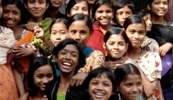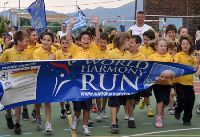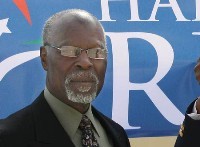- Region Summary News
- 25th Anniversary
- 2011-2013 and Beyond...
- Participate
- testing
- Photos: World Oneness Aspiration Themes
- Torch-Bearer Award
- Videos
- Friends
- UN Initiatives
- Media
- Year - Rapprochement of Cultures
- Davidson Hepburn Message
- Other IYRC Messages and Statements
- Examples of IYRC at Events
- Living in Harmony - Summer Camp Curriculum
- Introduction, Dedication, Contents, Note to Camp Teachers
- Chapter One ...Imagination
- Chapter Two...Building Harmony through Affirmations
- Chapter Three...Feel and Express Harmony through Art
- Chapter Four...Good Things about Ourselves - Our Virtues
- Chapter Five...Fitness
- Chapter Six ...Involvement with Nature
- Chapter Seven...Love Starts Here: Building a Just and Peaceful World
- Afterword .....To students, teachers, and parants -
- NYC Recreation Centers - Day Camps
- IYRC Logo: 6 Languages, Multicolor strands and symbol
- Sample Handout - Message, Song Music, Country list, Photos
- IYRC Talking Points and FAQ
- "How to" show IYRC at "Live from Road" news
- Schools And Kids
- Song
- About
- Asia Pacific
Introduction, Dedication, Contents, Note to Camp Teachers
LIVING IN HARMONY - Introduction
Empowering Children to Become World Harmony Builders
Dedication, Contents, Note to Camp Teachers

Illustrations by Radha Honig
Copyright 2005, Andrew Kutt
All rights reserved. No portion of this book may be reproduced in any form without express written permission from the Publisher.
The summer camp curriculum contains seven out of the original twenty chapters as well as a few additions and modifications to the content.
Dedication to the UN and UNESCO 2010 International Year for the Rapprochement of Cultures:

We are honored to dedicate this harmony-building curriculum to the International Year for the Rapprochement of Cultures as designated by the United Nations and UNESCO (United Nations Educational, Scientific and Cultural Organization).
In the action plan for 2010 UNESCO states - "The main goal of the International Year will be to demonstrate the benefits of cultural diversity by acknowledging the importance of the transfers and exchanges between cultures and the ties forged between them since the dawn of humanity."
 Secretary General of the United Nations, Mr. Ban Ki-moon gave the
following message (1): The International Year for the Rapprochement of
Cultures is an important initiative. During the year, we will be
celebrating cultural diversity and showing how intercultural dialogue
and understanding are essential for a more peaceful world. We will also
be highlighting the crucial role of culture in development. Let us work
together to make the Year a resounding success."
Secretary General of the United Nations, Mr. Ban Ki-moon gave the
following message (1): The International Year for the Rapprochement of
Cultures is an important initiative. During the year, we will be
celebrating cultural diversity and showing how intercultural dialogue
and understanding are essential for a more peaceful world. We will also
be highlighting the crucial role of culture in development. Let us work
together to make the Year a resounding success."
 Dr. Davidson Hepburn, President of the General Conference of UNESCO offered the following words of support to all participants of the World Harmony Run (2) - in which the NYC Parks and Recreation Center summer schools are also planning to participate in August 2010. -The International Year for the Rapprochement of Cultures presents a wonderful opportunity to creatively celebrate cultural diversity and its role in forging ties between cultures and people. There is great value in bringing together different kinds of people, different forces, different views, different religions, and different beliefs... The multi-cultural, international, and local participation of the World Harmony Run demonstrates the concept of peace and harmony in a unique and practical way and reinforces the goals and objectives of UNESCO's mandate and the International Year. A guiding principle of UNESCO's mandate, and all its work, is the notion that "Since Wars begin in the minds of men, it is in the minds of men that the defenses of peace must be constructed." Therefore, it is with great pleasure that I support and encourage initiatives like the World Harmony Run that touch and inspire people's hearts and put values of diversity, dialogue, and understanding so central to UNESCO's work into action.
Dr. Davidson Hepburn, President of the General Conference of UNESCO offered the following words of support to all participants of the World Harmony Run (2) - in which the NYC Parks and Recreation Center summer schools are also planning to participate in August 2010. -The International Year for the Rapprochement of Cultures presents a wonderful opportunity to creatively celebrate cultural diversity and its role in forging ties between cultures and people. There is great value in bringing together different kinds of people, different forces, different views, different religions, and different beliefs... The multi-cultural, international, and local participation of the World Harmony Run demonstrates the concept of peace and harmony in a unique and practical way and reinforces the goals and objectives of UNESCO's mandate and the International Year. A guiding principle of UNESCO's mandate, and all its work, is the notion that "Since Wars begin in the minds of men, it is in the minds of men that the defenses of peace must be constructed." Therefore, it is with great pleasure that I support and encourage initiatives like the World Harmony Run that touch and inspire people's hearts and put values of diversity, dialogue, and understanding so central to UNESCO's work into action.
Throughout 2010: International Year for the Rapprochement of Cultures, I wish all the organizers and participants in the World Harmony Run many successful events and joyful shared experiences. May your activity contribute to the global recognition of the intrinsic relationship between sustainable development and the promotion of cultural diversity, mutual understanding, and a culture of peace.
‖
(1) http://www.unesco.org/en/rapprochement-of-cultures/high-panel-on-peace/message-from-ban-ki-moon/
(2) For a copy of the full message: http://www.worldharmonyrun.org/unesco_year/davidson_hepburn_unesco_message
TABLE OF CONTENTS
Introduction . . . ..Including Note to Camp teachers.
Chapter One . . . .Imagination
Chapter Two . . . .Building Harmony through Affirmations
Chapter Three . . Feeling and Expressing Harmony through Art
Chapter Four . . . The Good Things about Ourselves - Our Virtues
Chapter Five . . . .Fitness
Chapter Six . . . . Involvement with Nature
Chapter Seven . .Love Starts Here: Building a Just and Peaceful World
Afterword . . . .....To students, teachers, and parants: Paths...
Introduction
Living in Harmony is intended to provide a pathway for students and
teachers towards the goals of fostering greater harmony in their
schools, in their communities and in the world. There are two primary
aspects of our experience as human beings - an inner, personal, and
individual aspect; and an outer, social and communal aspect. In order to
build a world of greater harmony, we must first establish some measure
of harmony in our own personality. Then we must learn the skills of
creating harmony in our relationships with others. With a sense of
harmony within ourselves, combined with the tools necessary to create
harmonious relationships with others, we have the resources with which
to build harmonious communities - both local and global.
Living in Harmony focuses on these aspects of human development. The inner aspect is addressed in Part I and the outer aspect is the focus of Part II. In Part I, we explore ten ways for students to get in touch with their own inner world - that is, with their own feelings, thoughts, and dreams. The first and primary relationship we have is with ourselves. It is on this relationship that all of our other relationships hinge. Children who are balanced, confident, sensitive individuals with a healthy self-image are more likely to have positive and productive relationships with others. Their ability to accept who they are, to appreciate their own talents, and to express their feelings and ideas in constructive ways will directly affect their capacity to be caring, understanding, and communicative partners with others.
The first ten chapters of this book (all chapters not included in adapted summer camp version) present a broad spectrum of activities designed to help foster and guide this inner aspect of development. Studying the curriculum of the inner life is different from studying math, reading, geography or science. When we teach ‗normal‘ academic subjects, we look to books and to the world around us. To help students study the subject of their inner world, we turn their attention to their feelings, ideas, dreams and visions. To study academic subjects, we encourage students to use their minds, and the aim is to gain knowledge and skills. To study the inner life, we must help students make a connection to their own private selves - their hearts and souls. The aim here is to help them gain wisdom, peace, and the development of their nobler qualities. The ‗inner‘ curriculum is about helping students become more aligned with their own source, in order that they may attain greater happiness and be of better service to the world.
The second ten chapters of the book (all chapters not included in
adapted summer camp version) help teachers and students move from the
realm of the personal to the realm of society. These chapters are aimed
at building what Riane Eisler would call partnership skills - that is,
skills in building relationships based upon mutual trust, respect, and
communication. The relationships built by means of partnership skills
are ones undertaken with a clear understanding of the common benefits
working together can bring. Some partnership skills have to do with
helping students gain a better understanding of the geography and the
history of the world, so that they are able to begin to place their own
culture, perspectives and opinions into a broader global context. Other
partnership skills, such as cooperation skills and conflict resolution
skills, focus on helping students learn to weave the fabric of
relationships - communication - into productive results. Still other
partnership skills have to do with helping students develop their inborn
human capacity for caring, compassion, and empathy. All of these
partnership skills comprise the larger building blocks of leadership
qualities that students can develop with the ultimate purpose of
building a peaceful and just society on earth.
The language of Living in Harmony is directed at students. In other
words, it is written to bypass the need of the teacher to interpret the
lessons and to put them into child-oriented language. It is intended to
be less like an instructional manual for teachers and more like a
storybook. The teacher of students in grades 1-3 can simply read the
book aloud to the students. Students in grades 4-6 can read some
sections silently, but they will benefit from reading aloud to each
other, or teachers of students in these grades can read the entire book
aloud to the students. Students in grades 7 and 8 can read some sections
silently on their own, read other sections aloud to each other, or they
can occasionally read sections to younger students.
The chapter lessons are intended to appeal to a wide variety of
learners. The activities are designed to appeal to different interests
and to involve many learning modes - imagination, creativity, mind-body
fitness, language, nature, etc. There is a wide enough variety of
activities to suit all kinds of learners. By exposing children to a full
spectrum of activities, we enhance their holistic development into
healthy, balanced, insightful, happy, and confident young adults. The
language, and the topics covered, lend themselves to many opportunities
for additional spelling, vocabulary, writing, reading, and artistic
activities that could be created by the teacher and the students - if
they have the space in their curriculum.
-The language of the heart is the only language that everybody can understand,‖ as Sri Chinmoy says. The ultimate goal of this book is to put students in touch with their own hearts, so that they can ultimately express their nobler qualities and develop their unique talents for the greater good of the world at large. The world desperately needs a new generation of leaders who understand and speak the language of the heart. It is hoped that this book will facilitate the students‘ journey to their own highest and best selves, and from there outward towards the communities they will be charged with constructing as future leaders. Riane Eisler has said, "I see a world where the most highly valued work will have the consciousness of caring." It is hoped that Living in Harmony will help students, teachers, and parents alike to move forward towards the fulfillment of that vision.
I want to thank Sri Chinmoy for all of his work for world harmony and for inspiring the writing of this book. I want also to thank Riane Eisler for being a source of spiritual light and wisdom. Thanks to all of my colleagues - especially Tim Seldin, Jonathan Wolff, Margaret Wolff, Paul Epstein, Ann Epstein and Aline Wolf for their tireless support and encouragement. Thank you to dear friends, Zoe Handerson, June Lang, Stefania Rubino and Sahayak Plowman for their invaluable contributions. I also want to thank Paula Kleinman for her invaluable help in editing this book. Finally, thank you to all the students, fellow teachers, and parents throughout the years from whom I have gained insights, ideas, and inspiration in ways great and small.
-Andrew Kutt 2005
Note to summer camp teachers:
Each chapter has several lessons and activities. It will probably not be
possible to get to them all but the variety allows you to choose the
ones you feel are best suited for your class. Some can also be done
independently or on a different day. We have also added several
activities especially for the Summer Camp program that can prepare
students for the World Harmony Run event being planned for August 19th
at Flushing Meadow-Corona Park so that your students can get the most
out of the experience.
Please note that this is only a selection of the chapters and activities
from the full version of this book and we have also made a few
modifications. The original book can be found at:
http://www.worldharmonyrun.org/schoolsandkids/living_in_harmony.






















